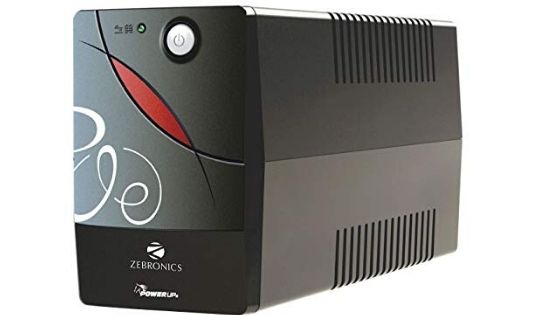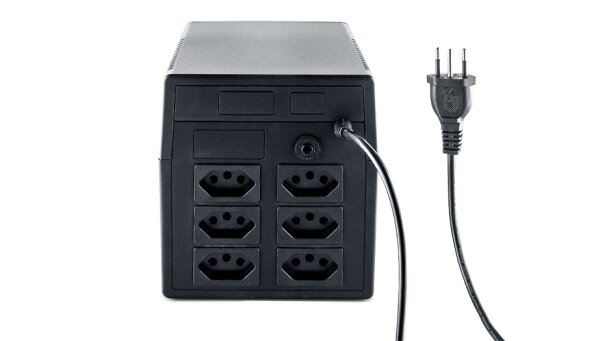UPS is a protective device for electronic equipment, against variations and power outages. As it contains an internal battery, it assists in the correct disconnection of devices. Imagine being at the final stage of a file and the power goes down. If this happens and the computer is connected to the UPS, the battery will go into action to keep it turned on.

What is a UPS?
UPS (“uninterruptible power supply”) is a device for protecting electronic equipment against power outages or variations.
How it works:
It contains an internal battery to prevent these devices, connected to it, from turning off as soon as the power drops. With some time of autonomy, to keep the equipment running after the fall, the user can save the work or progress of the game and shut down the devices correctly.
The battery also serves to provide clean energy when there is an overload in the electrical network, avoiding burning components, or when the voltage is lower than necessary for the electronics to operate. In some models, it also plays the role of the stabilizer, keeping the voltage going to the equipment constant and clean.
Types of UPS and How They Work
When buying a UPS, it is necessary to understand that there are three models of the device, which must be considered according to the needs of each user.
Standby or offline:
It is the most basic of models. Most recommended for home use. The main function is to provide autonomy to keep the equipment on for a while after the power failure. It may or may not contain the function of stabilizing the voltage going to the devices – in these cases, the battery is used to eliminate the variations in energy.
Interactive Line:
It has an automatic voltage regulator that allows to deliver sine waves, compensating for variations in the electrical network. This model isolates the energy that comes out of the outlets for the equipment from a transformer at the output, which avoids turning on the battery for each variation in the electrical network.
Double conversion UPS:
This is the most expensive model of the three. It always offers clean energy, because the batteries are in constant operation.
When the power from the outlet enters the double conversion UPS, it is converted from alternating current (AC) to direct current (DC), to power the batteries. The batteries’ energy, in turn, is transformed into AC to provide clean and interference-free energy for the equipment.
In addition to generating more heat, this type of UPS also wears out the battery more quickly, as it is in constant operation – even when there are no spikes or power outages.
They are most required in devices that need constant power (servers or hospital devices, for example).

How to choose the ideal UPS model
To choose an ideal model, it is necessary to know which equipment will be connected to it to measure the power of the UPS, expressed by the acronym VA (Volt Ampere).
In addition to the VA power, another important specification of the UPS is the power factor, a number that varies between 0 and 1. The power factor is used to measure the maximum capacity (now in Watts) of the equipment’s output.
For example: a 1200VA UPS with a power factor of 0.7 has a maximum power capacity of 840 watts – just multiply the two specifications.
It is recommended that the rated power of the UPS be between 20% and 25% higher than the total power of the devices connected to it. Following the same example, all connected equipment could not exceed 670 watts.
Check the power of the devices you want to connect to the UPS – they are usually specified at their source – and add them up. Remember that the result cannot exceed 80% of the rated capacity of the UPS.
And how long does the battery last?
It depends on the model and the equipment in use. Some UPS indicates the duration of the battery life on the packaging or on the product page. Some also indicate by LEDs when the battery power is running out.
It is worth mentioning that the UPS is not used for the user to continue working after a power failure. This autonomy of the device must be used, precisely, to save the work and to disconnect the devices correctly.
